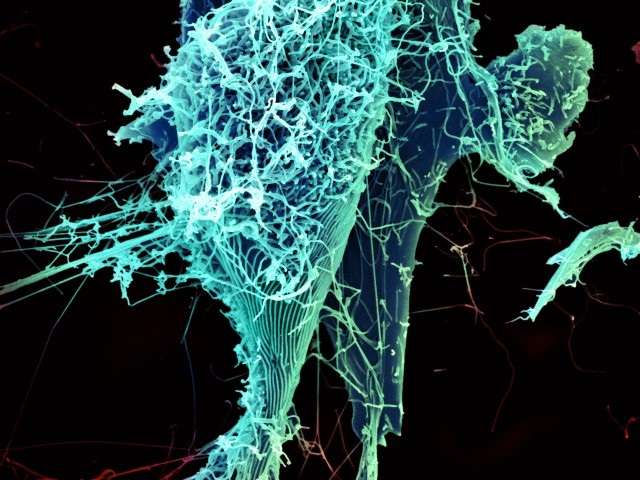Potential evidence of lung-specific Ebola infection found in recovering patient

Scientists have found potential evidence of Ebola virus replication in the lungs of a person recovering from infection, according to new research published in PLOS Pathogens. The findings could aid research into new treatment approaches and better understanding of how the virus is transmitted.
From 2013 to 2016, West Africa experienced an unprecedented outbreak of hemorrhagic Ebola. Lab studies, animal studies, and observations of evacuated patients treated in Europe and the USA have suggested that Ebola might cause lung damage by replicating itself in lung tissue. However, no direct evidence yet exists for lung infection by the Ebola virus.
To better understand how the lungs might be involved in Ebola, Dr. Ippolito of the National Institute for Infectious Diseases "Lazzaro Spallanzani", Rome, and colleagues tracked the presence of Ebola virus genetic material in the lungs and the blood of a single patient during treatment and recovery. The patient was a healthcare worker who was evacuated from West Africa and treated in Rome.
Specifically, the scientists monitored the patient's lung levels of viral RNA fragments known to be associated with Ebola replication, and compared these with viral RNA levels in the patient's blood. They found that viral RNA and viral replication markers remained in the lungs for about five days after it was no longer detectable in the blood.
The results suggest that Ebola virus may have been replicating in the lungs. It is possible that the lungs simply provided a protective environment that allowed RNA to linger longer than it did in the blood. However, the scientists note, the presence of RNA for both total and replication markers in the lungs supports the possibility of active replication.
"We demonstrated a long persistence EBOV replication markers within the respiratory tract, compared to plasma," the authors explain. "This suggests a major role of the respiratory tissues in the pathogenesis of Ebola virus disease."
Further research will be needed to better understand the potential role of lung infection in Ebola and whether it may be a factor in transmission of the virus from one human to another.
More information: Biava M, Caglioti C, Bordi L, Castilletti C, Colavita F, Quartu S, et al. (2017) Detection of Viral RNA in Tissues following Plasma Clearance from an Ebola Virus Infected Patient. PLoS Pathog 13(1): e1006065. DOI: 10.1371/journal.ppat.1006065

















